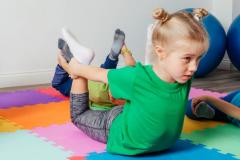- Overview
-
My research is based on evidence gathered through the BC Children's Hospital Sunny Hill Motion Lab. We see approximately 200 children each year from all across BC, each with a unique set of diagnoses, impairments to motion and personal goals. We collect a rich set of kinematic and kinetic data for each patient, as well as physical exams, muscle function and foot-step pressure profiles. Using the gathered information accumulated in our database, we are able to pursue clinical research questions including evaluation for surgical procedures.
- Research
-
Characterization and Evaluation of a Powered Knee Orthosis
Children with diagnoses of Cerebral Palsy, Spina Bifida, Traumatic Brain Injury, as well as other conditions, may experience atypical gait due to the inability to fully extend their knee joints while walking. We are working with an external Canadian company to develop and test a powered knee orthosis that is designed to help patients be able to better extend their knee joints with appropriate timing during their gait. This study aims to characterize the range of orthosis settings that will be needed to accommodate the target population, test the orthosis within healthy individuals and with the target population, and to develop a clinician-friendly user interface that clinicians can use to 'tune' the orthosis for the unique needs of each patient.Using gait characteristics from patients with Cerebral Palsy to 'flag' susceptibility to Hip Subluxation
We hypothesize that a subset of Cerebral Palsy patients who have asymmetric spastic diplegia are at an increased risk for progressive hip subluxation. These patients are currently screened infrequently based on the hip surveillance guidelines. Therefore, we are concerned we might miss their progressive hip subluxation.
To assess if there is an increased risk of hip subluxation in this patient population we want to compare pelvis radiographic findings in symmetric vs asymmetric spastic diplegic patients. We will also analyze each patient's statistics regarding their pelvic obliquity and the difference between their left and right int/external rotation of their hips. We expect that we will determine a threshold of pelvic obliquity and and difference between left and right hip rotation that will accurately predict a higher likelihood of progressive hip subluxation. These 'flags' will be utilized to surveil and intervene before a crisis event occurs.GrantsBCCHR Evidence to Innovation Seed Grant - 2019
Research Group MembersSienna Juco, INSPIRE PROGRAM TRAINEE
Congratulations CIHR Fall 2024 Project Grant recipients
Congratulations to the investigators and their teams who were awarded funding through the Canadian Institutes of Health Research (CIHR) Fall 2024 Project Grant competition!






